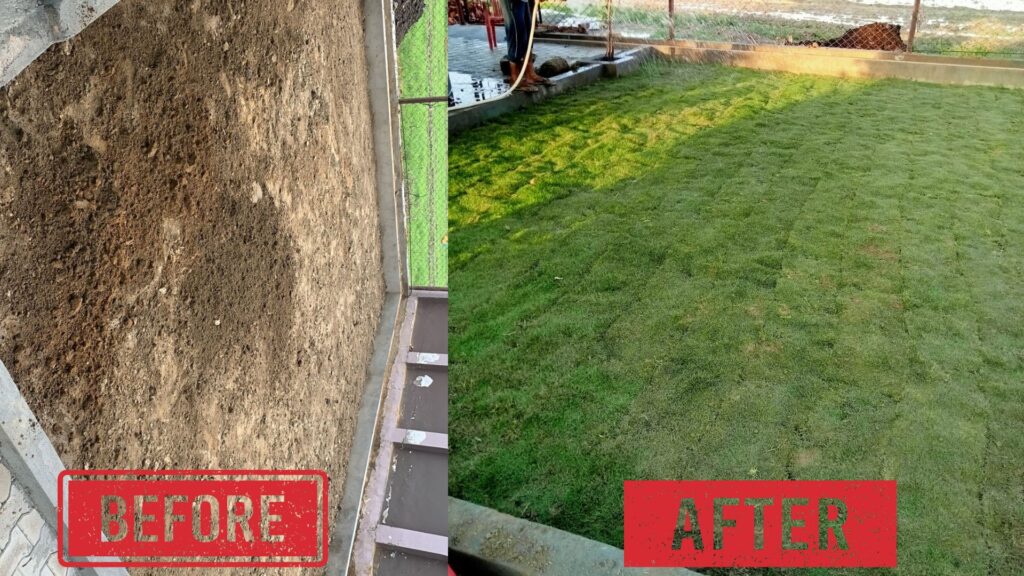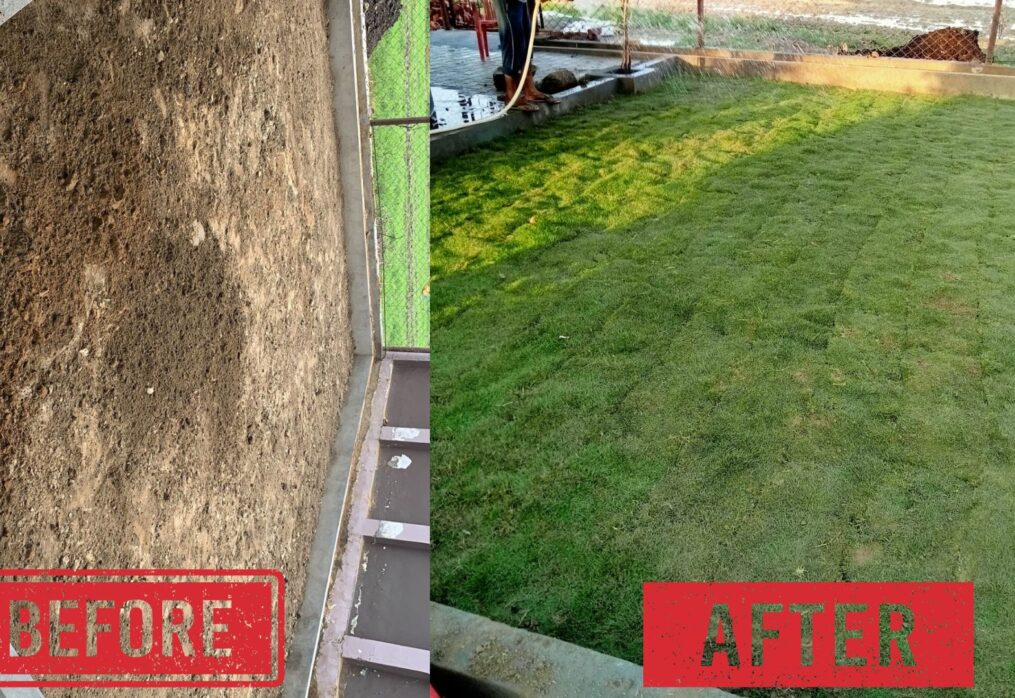From Soil to Turf: Timeline of Growing Natural Lawn Grass
If you’re wondering how to grow natural lawn grass, understanding the grass growing process step by step is crucial for success. Begin with preparing soil for grass seed, ensuring proper soil preparation for natural turf to encourage healthy roots. Knowing the best time to plant lawn grass and following organic methods to grow lawn grass significantly affect the natural turf growth stages. The natural grass lawn timeline and grass seed germination timeline vary depending on weather, soil quality, and seed type, but generally answer the question of how long does grass take to grow from seed—typically between 7 and 30 days. To master growing lawn grass naturally, follow sustainable and eco-friendly lawn care practices.
These natural lawn care tips not only support a greener environment but also improve your turfgrass establishment timeline, highlighting the clear advantages of a natural lawn vs artificial turf. For anyone exploring steps to grow grass from soil, having a clear timeline for growing grass and understanding the grass seed growth stages will set the foundation for a lush, vibrant lawn.
Introduction
Ever wondered how long it really takes for natural lawn grass to grow? It’s not an overnight miracle, but with the right steps, you can go from bare dirt to a lush, green paradise. Understanding the timeline helps you manage expectations, avoid mistakes, and enjoy the journey. Whether you’re sowing seeds or laying sod, the growth process is like raising a green baby—nurturing, patient, and rewarding.
🌾 Choosing the Right Grass for Your Region – growing natural lawn grass
Cool-season vs Warm-season Grasses
Grass isn’t one-size-fits-all. In India, warm-season grasses like Bermuda (Doob), Zoysia, and Carpet Grass thrive in sunlight and heat. Cool-season grasses, such as Ryegrass or Kentucky Bluegrass, prefer cooler climates and are common in hilly areas.
Popular Natural Lawn Grass Types in India
-
Doob Grass (Bermuda) – Quick grower, heat-loving.
-
Korean Grass (Zoysia) – Dense and slow-growing but elegant.
-
Carpet Grass – Low maintenance, ideal for shady spots.
🧱 Preparing the Soil: The Foundation of a Healthy Lawn
Your grass is only as good as the soil beneath it.
Soil Testing and pH Balancing
Start with a soil test to check nutrient levels and pH. Ideal pH? Between 6.0 and 7.0.
Removing Debris and Weeds
Clear the area of rocks, old roots, and weeds to prevent unwanted competition.
Tilling and Compost Mixing
Loosen the soil up to 6 inches deep and mix in compost for added nutrients and better drainage.
🌱 Sowing the Seeds or Laying Sod
Difference Between Seed and Sod
-
Seeds are more budget-friendly but take longer.
-
Sod (pre-grown rolls of grass) gives you a green lawn almost instantly.
Pros and Cons
| Method | Pros | Cons |
|---|---|---|
| Seed | Affordable, more variety | Longer growth time |
| Sod | Instant results, erosion control | Expensive, limited options |
🌿 Germination Stage: 5–30 Days
This is the “baby steps” stage.
What Happens During Germination?
The seed absorbs water, swells, cracks open, and sprouts. Root tips anchor into the soil while the shoot heads upward.
Environmental Conditions Needed
-
Warm soil (18°C to 30°C)
-
Consistent moisture
-
No foot traffic
Watering Tips for Germination
Water lightly 2–3 times a day. Keep soil moist, not soggy.
🍃 Seedling Stage: 1–3 Weeks Post Germination
Time to watch those tiny green blades grow.
Early Growth Signs to Watch For
You’ll see thin, fragile shoots. They’re vulnerable—so avoid stepping on them!
Mowing for the First Time
Wait until the grass reaches about 3 inches before mowing. Use sharp blades and never cut more than 1/3 of the height.

🌳 Establishment Stage: 1–3 Months
Here’s where your lawn gains strength.
Root Development and Thickening
Roots dig deeper, and blades get bushier. This is the “teenager” phase of your lawn.
Feeding with Fertilizers
Use a slow-release, nitrogen-rich fertilizer after 4–6 weeks.
Protecting from Foot Traffic and Pests
Keep pets and kids off the lawn. Watch for signs of grub worms or fungal patches.
🍀 Full Lawn Maturity: 3–6 Months
Yes, it takes up to half a year!
When Can You Use Your Lawn?
Once it’s thick, lush, and firmly rooted, go ahead—host that picnic or roll around with your dog!
Tips to Maintain a Lush, Mature Turf
-
Mow regularly
-
Water deeply, not frequently
-
Fertilize seasonally
⏳ Factors That Influence Lawn Growth Timeline
Climate and Season
Warm weather speeds up growth. Monsoon can help or hinder, depending on drainage.
Grass Variety
Zoysia takes longer but looks premium. Bermuda grows faster but needs more mowing.
Soil Health and Care Routines
Neglected soil = slow growth. Rich, well-tended soil = turbocharged results.
⚠️ Common Mistakes That Delay Lawn Growth
Overwatering or Underwatering
Too much? You drown the roots. Too little? They shrivel up.
Poor Soil Prep
Skipping soil testing or composting is like building a house on sand.
Mowing Too Early
Cutting young grass weakens its root system. Patience is key.
🚀 How to Speed Up Lawn Grass Growth Naturally
Organic Boosters and Compost Tea
Natural nitrogen sources like cow dung compost or vermicompost energize growth.
Strategic Watering and Sunlight
Water early morning. Ensure 5–6 hours of sunlight, especially for warm-season grasses.
🌿 Sod Rolls: Instant Green Lawn
Want a lawn yesterday? Sod is your shortcut.
How Fast Sod Takes to Root
Usually 10–14 days to start rooting. Fully rooted in about 4–6 weeks.
Care Tips Post Sod Installation
-
Water daily for 2 weeks
-
Avoid stepping on it
-
First mow after 3 weeks
🛠 Lawn Care Tips for Each Stage
Week-by-Week Care Guide
| Week | Tasks |
|---|---|
| 1–2 | Water frequently, no walking |
| 3–4 | Watch for sprouts, prep for fertilizing |
| 5–8 | First mow, apply light fertilizer |
| 9+ | Reduce watering, begin normal care routine |
Do’s and Don’ts Throughout the Journey
Do: Monitor soil moisture.
Don’t: Rush mowing or skip watering during dry spells.
👨🔧 When to Call a Professional
Signs Your Lawn Needs Expert Help
-
Yellowing patches
-
Patchy growth
-
Persistent pests or fungus
Benefits of Hiring Lawn Care Services
They test, treat, and transform your lawn faster than DIY efforts—especially helpful in large areas or if you’re short on time.
🎯 Conclusion
Growing a natural lawn is a journey, not a sprint. From seed to soft green carpet under your toes, the process takes patience and care. Whether you wait out the months with seeds or roll out instant turf with sod, your dream lawn is totally within reach. With the right knowledge and steps, you can enjoy a healthy, lush yard that thrives for years.
❓ FAQs
Q1. How long does it take grass seed to fully grow into a lawn?
Typically, 3 to 6 months for full maturity, depending on grass type and conditions.
Q2. Can I grow grass in any season?
Warm-season grasses grow best in spring/summer; cool-season grasses in early spring or fall.
Q3. What’s faster: seed or sod?
Sod gives instant coverage and roots in weeks, while seeds take months to grow fully.
Q4. How often should I water newly planted grass?
Light watering 2–3 times a day initially; reduce as grass matures.
Q5. What’s the best natural fertilizer for lawn grass?
Compost, cow dung, vermicompost, and liquid compost tea work great for natural growth.
Last Updated on 6 months ago by Anjali Mehra Ph.D. in Horticulture (Punjab Agricultural University)
- Best Lawn Grass for High-Footfall Religious Places in Punjab - December 29, 2025
- Why Lawn Grass Fails After Installation (Real Indian Case Studies) - December 25, 2025
- Nilgiri Grass vs Korean Grass – Price, Look & Maintenance Compared - December 23, 2025
